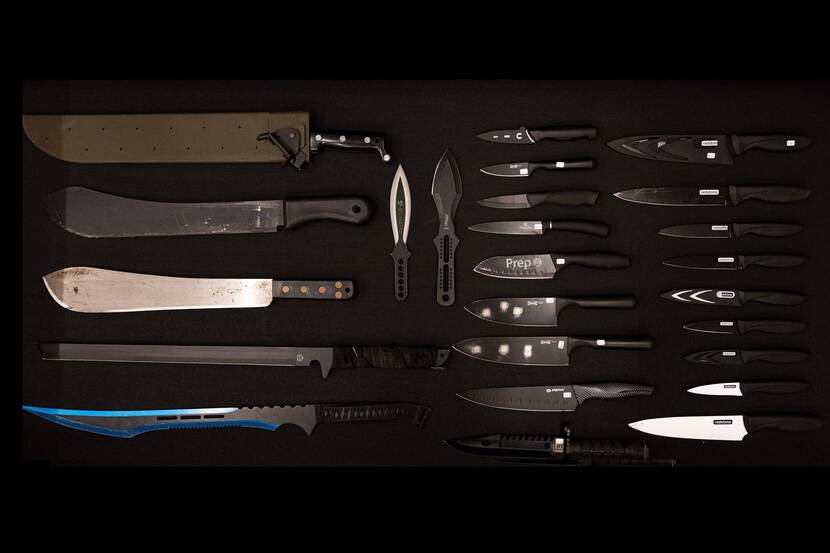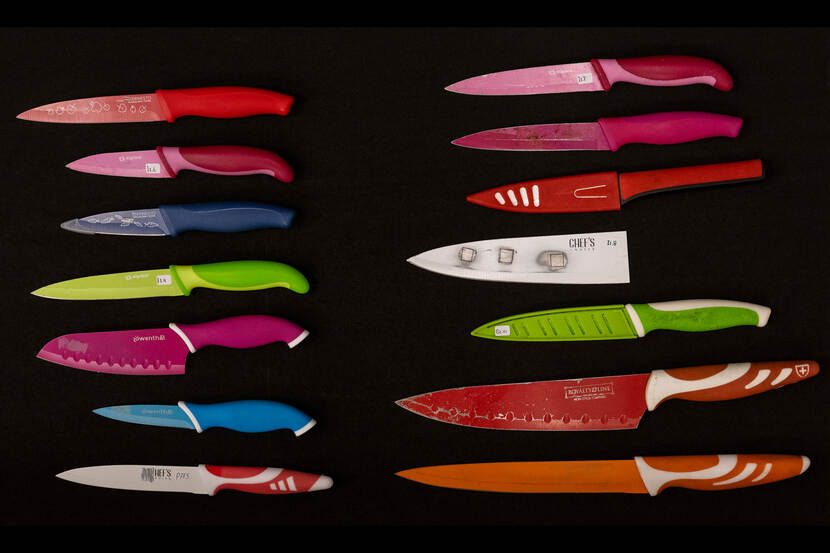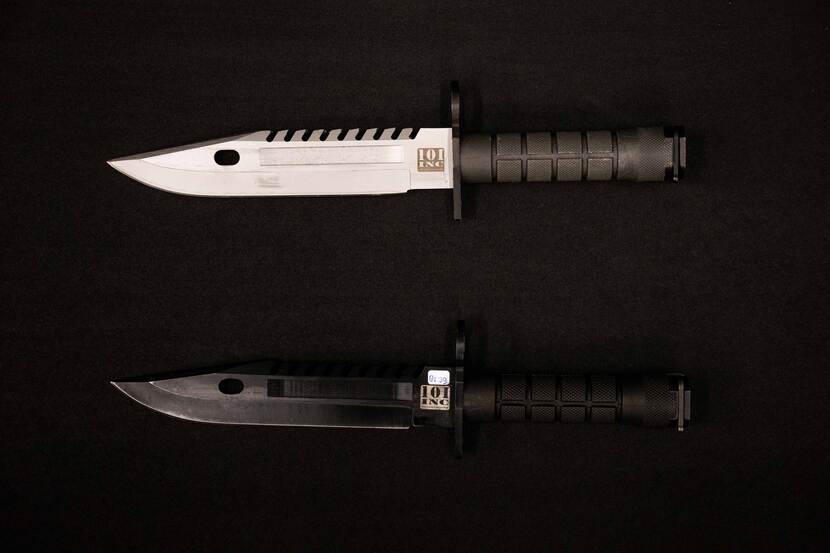‘Knives are getting bigger every day, we’re shocked by what we see’
The Netherlands Forensic Institute (NFI) is worried about the prevalence of knife possession amongst minors. Over the past two years, the NFI researched seized bladed and edged weapons and created a knife database. The database and recent studies show that edged weapons seized from minors are larger than average and intended to inflict the gravest possible injuries. The police share the NFI’s concerns.

The concerns about the possession and use of knives among minors are not new. In the past, it already became clear that 12 to 18-year-olds are increasingly involved in stabbing incidents. The number of arrests of minors for possession of illegal (bladed) weapons also rose significantly in recent years. The NFI decided to do research on the types of knives carried by minors after a stabbing incident with drill rap groups in Scheveningen.
After consultation with the Dutch National Police and the Public Prosecution Service, the institute was given permission to study knives seized in the eastern Netherlands during search or surrender operations. The knives are normally destroyed but some of them have now been included in an NFI reference database.
Serrated blades
Martin Janssen, a forensic microscopist and one of the database initiators, is shocked by what he found. ‘We are seeing knives becoming bigger and bigger. For example, knives with saw teeth, machetes and so-called Rambo knives. These are not knives you find in your kitchen drawer.’
‘The big knives are swords really’, adds his colleague Peter Zoon. ‘The biggest one is more than half a metre long.’ In comparison, the average length of a blade on knives studied by the NFI is less than fifteen centimetres.
Injuries
The NFI usually only examines deadly stabbing incidents. Experts study the depth of the stab wounds, among other things. The studies show that stabbing incidents in relationships, for instance, usually involve ordinary household knives. Injuries in and by minors are often inflicted using bigger knives, in Zoon’s experience. ‘It is clear that the risk of serious injuries is higher when such big knives are used.’
Quantities
Zoon and Janssen are even more concerned by the quantities of knives seized by the police than by the different types. In two years’ time, some 900 knives were seized in the eastern Netherlands. According to Janssen, ‘It is sometimes said that these knives are mainly found in the Randstad region but that is clearly untrue.’

Assessment
The database of photographs and compositions of the collected knives helps NFI experts to assess the type of knife used in a stabbing incident (if no weapon is found). Different coatings on knives leave different traces, for instance. Janssen continues,‘Eventually, we want to be able to use the information in the database to calculate the evidential value in criminal cases rather than estimate it. What is the probability that a certain type of knife was used as opposed to other knives?’
The database can also help in quantitative and qualitative data analysis to identify significant patterns of a criminal organisation. ‘In the future, we may be able to link specific types of knives or decorations to specific groups. This would help the police and the Public Prosecution Service in solving crimes’, says Zoon.
Expansion
The NFI would prefer to expand the database. ‘While we feel that the knives are representative for the entire country, we would like to investigate this further’, explains Janssen.
Police
On behalf of the Dutch National Police, Martin Sitalsing (responsible for the Care and Safety portfolio) describes the NFI’s findings as deeply concerning. They match concerns about rising possession and use of weapons among minors. ‘Every day, police officers in the field find that minors increasingly believe it to be normal to carry a weapon. Carrying weapons should never be considered normal. If you are carrying a weapon, the risk that you will actually use it is much higher.’
Guyon, a police officer whose last name is omitted for security reasons, confirms the picture outlined by the NFI. Guyon focuses on rivalling youth groups, such as drill rap groups, in the Laakkwartier district in The Hague. He sees how possession of weapons is rising among members and knives are getting bigger and bigger. ‘These are serrated blades, machetes or huge blades. I am sad to report that I have seen the horrible injuries such weapons can inflict.’

Status-enhancing
The youths Guyon encounters in the course of his work carry weapons to defend themselves against attacks from members of rivalling groups. ‘But they also seek out other groups to initiate confrontations. The weapons are also used to commit crimes. Possessing a bladed weapon enhances their status. Minors show them off on social media. Violence is being exalted.’
Moreover, illegal weapons are easily bought off the internet. They are offered on a huge scale online and cost less than thirty euros.
Added value for investigation
According to Guyon, the knife database can add significant value to police work. ‘If the NFI can tell us that a specific type of knife was used, this helps us in our investigation. Specific knives are common in youth groups. If we know that such a knife was used, it can point us to where we should be looking. It can also be a good thing to know what type of knife you are looking for when you search a residence.’